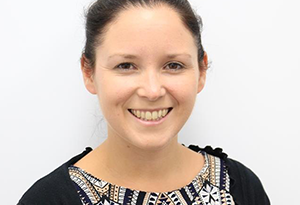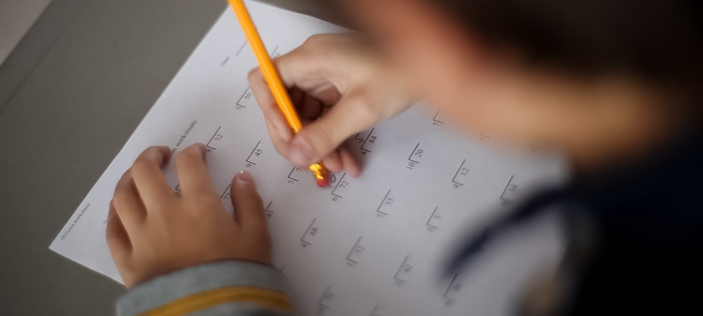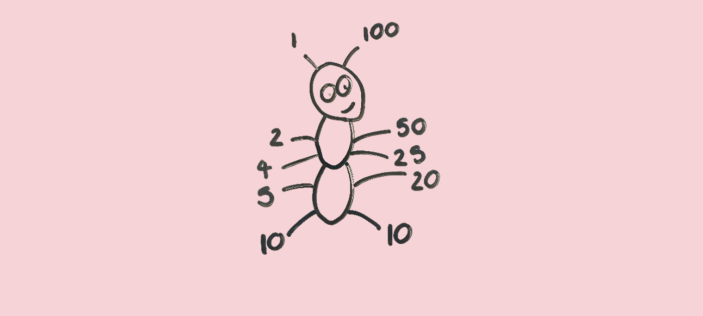As KS2 SATs week approaches, Year 6 teachers are gearing up to ensure their pupils are well-prepared and confident. Here are some quick wins, revision tips, and strategies to boost pupil confidence in the arithmetic test.
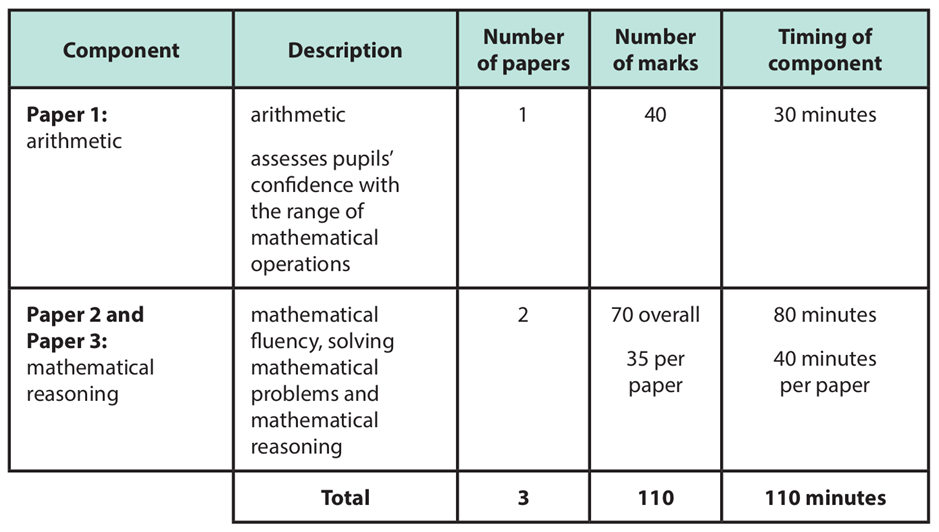
Paper 1 (arithmetic) will comprise constructed response questions, presented as context-free calculations. The majority of the arithmetic calculations will be worth one mark. However, two marks will be available for those involving long multiplication and long division.
While we can’t know for certain that particular question types will come up on the 2025 arithmetic paper, we do know that it will be entirely focused on number, ratio and algebra (see table below) and we can look for patterns in past papers to explore what is likely to come up.

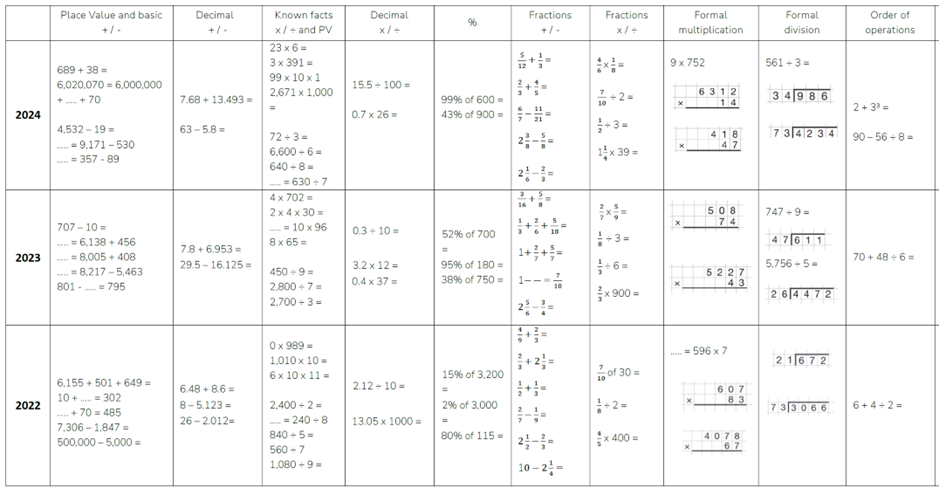
Boost confidence: Explore the Key Stage 2 Arithmetic Paper Question Summary with pupils and ask them, ‘What do you notice?’
What might pupils notice in the decimals strand?

Looking at past test paper questions, it seems likely that there will be a decimal addition and a decimal subtraction on the paper (perhaps two). Numbers vary in decimal places and often involve subtracting a decimal number from a whole number.
Revision tip: Don’t fall into the place value trap!
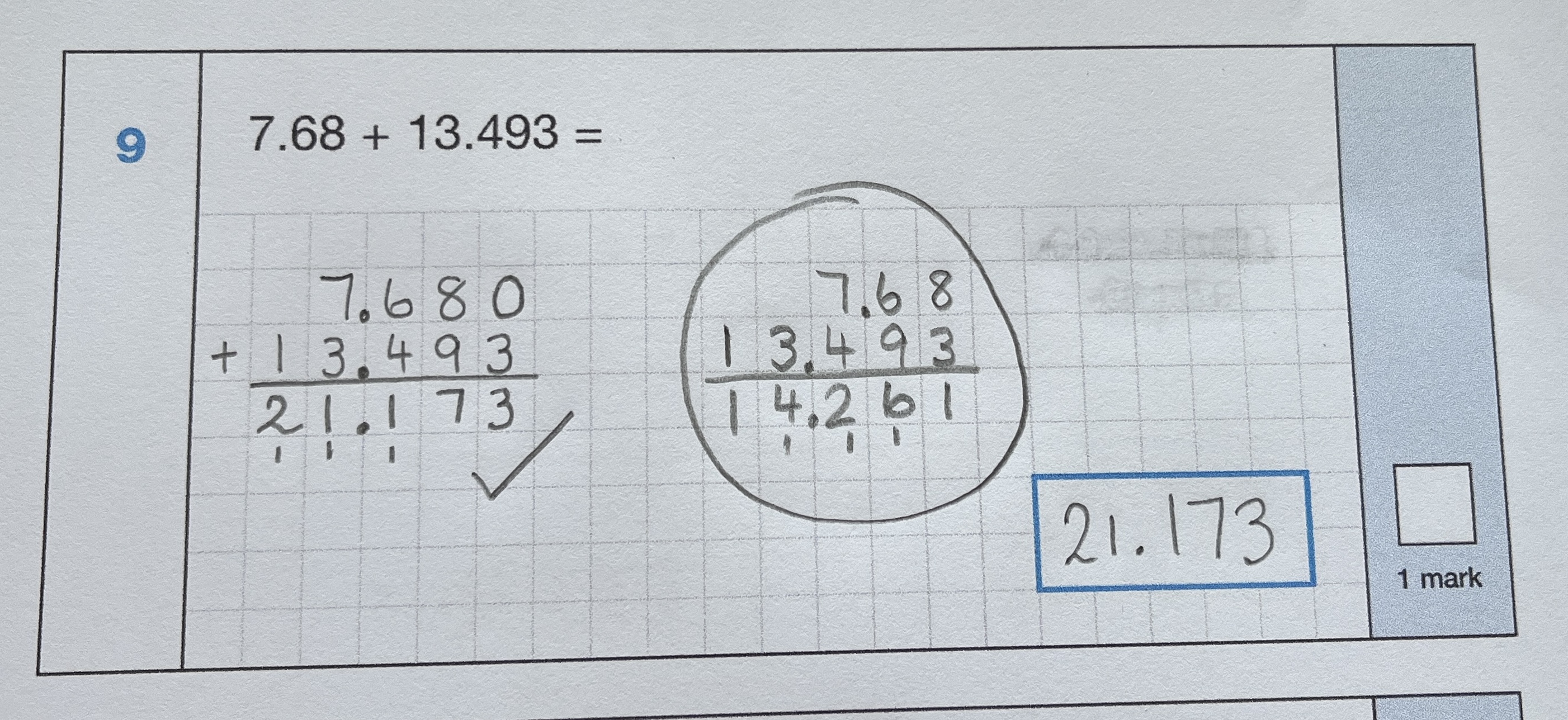
Why not provide pupils with an arithmetic paper with a mixture of correct and incorrect answers to ‘mark’? Common errors (such as the above) can be included and discussed, providing opportunity to rehearse spotting errors and making corrections.
Revision tip: Choose your method wisely
When subtracting a decimal number from an integer, there are several methods to choose from. The success of each will depend on pupils’ known facts, confidence with number bonds and understanding of regrouping or exchanging.
Method 1: finding the difference
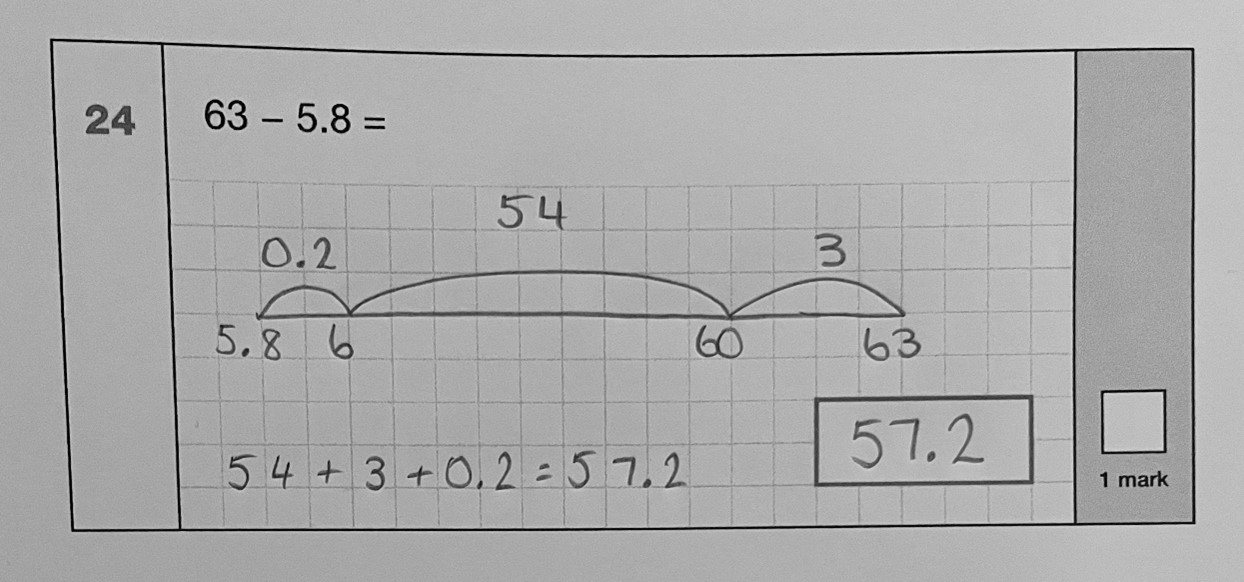
Method 2: column method with exchanging
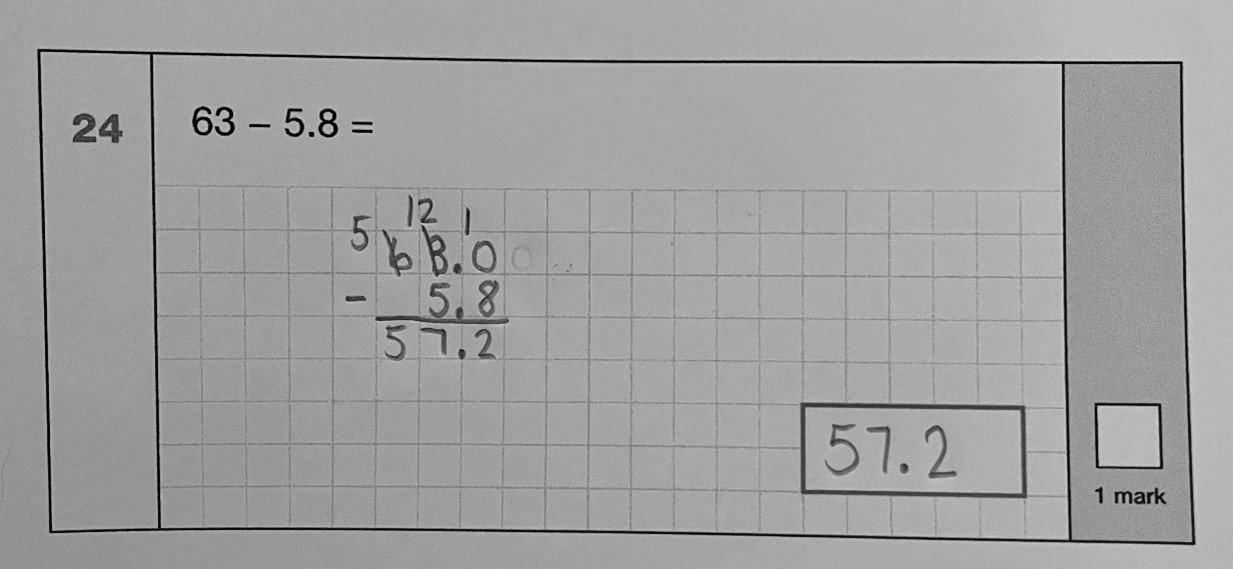
Note: Remind pupils to be mindful of the place value trap when using this one!
Method 3: flexible regrouping to subtract from a part
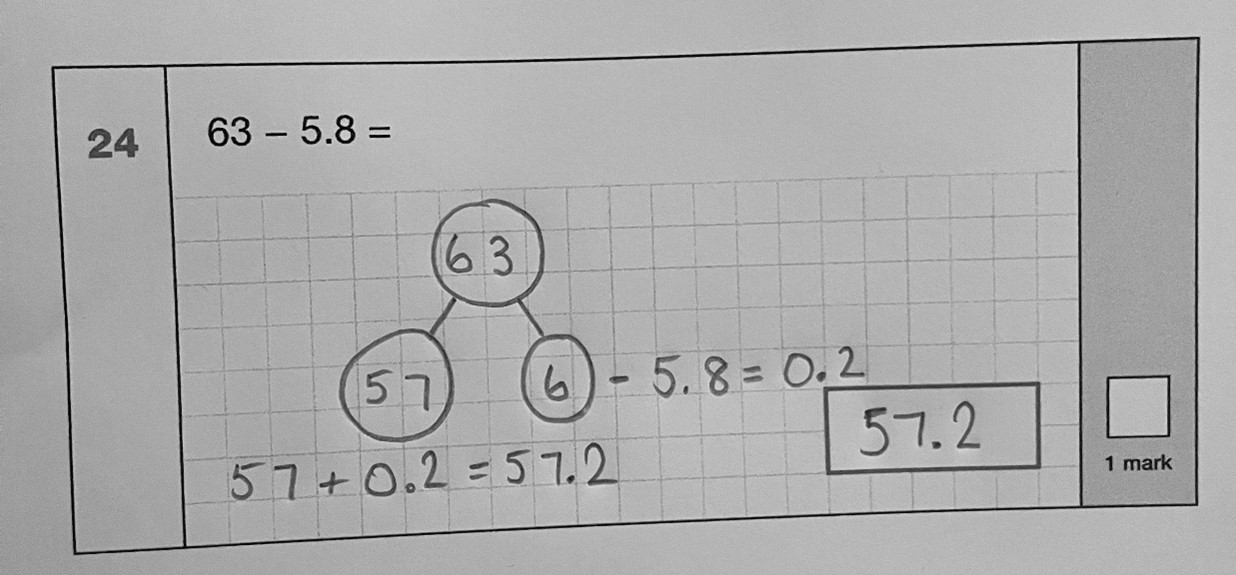
Revision tip: Look for the easiest route
Another pattern through the past papers can be found in calculating percentages. Previously, there have been 2, 3 or 4 questions per paper with percentages close to key benchmarks, e.g.,
- 99% of 600
- 95% of 180
- 51% of 900
- 99% of 200
- 45% of 460
This is another example of where method choice is key, both for efficiency and potentially, accuracy.
Method 1: adding parts
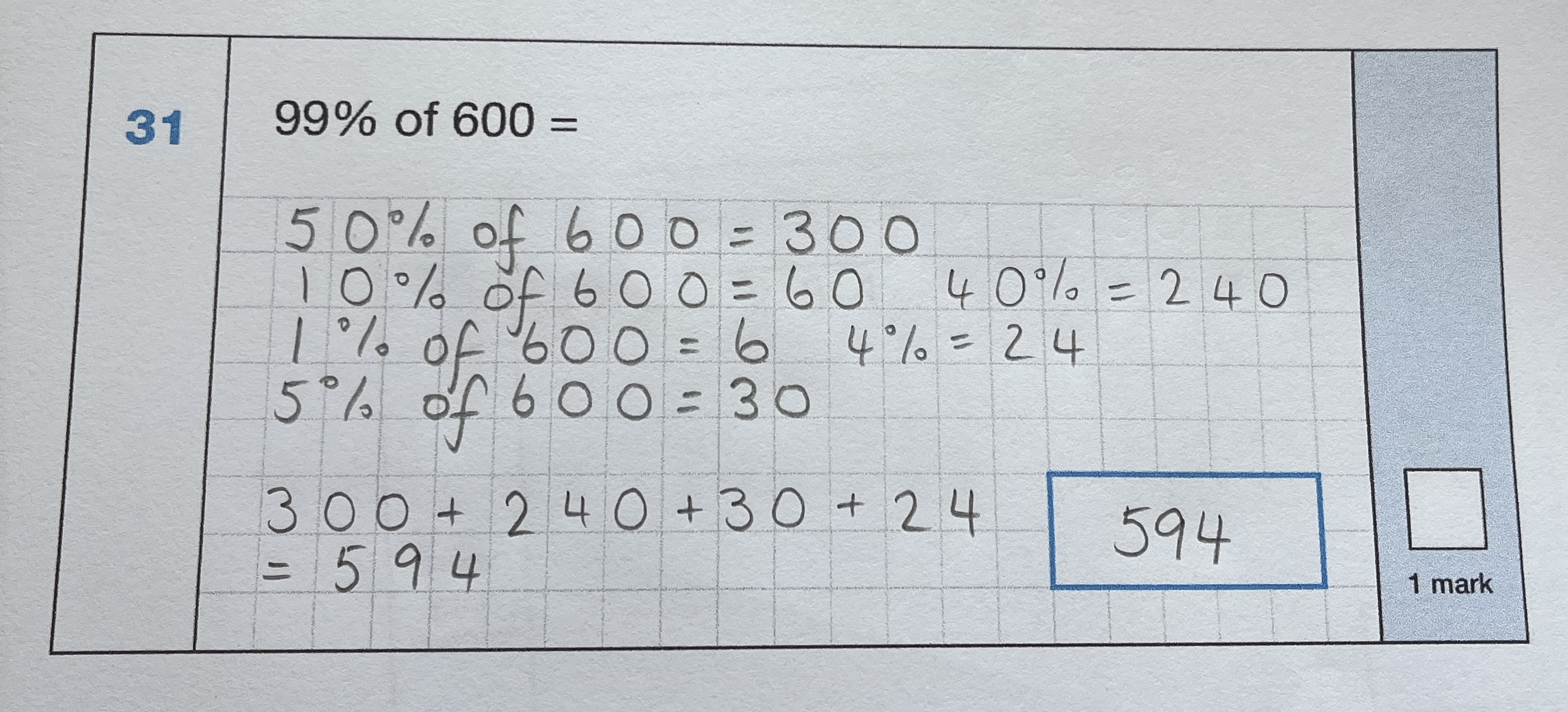
Method 2: subtracting a part from the whole
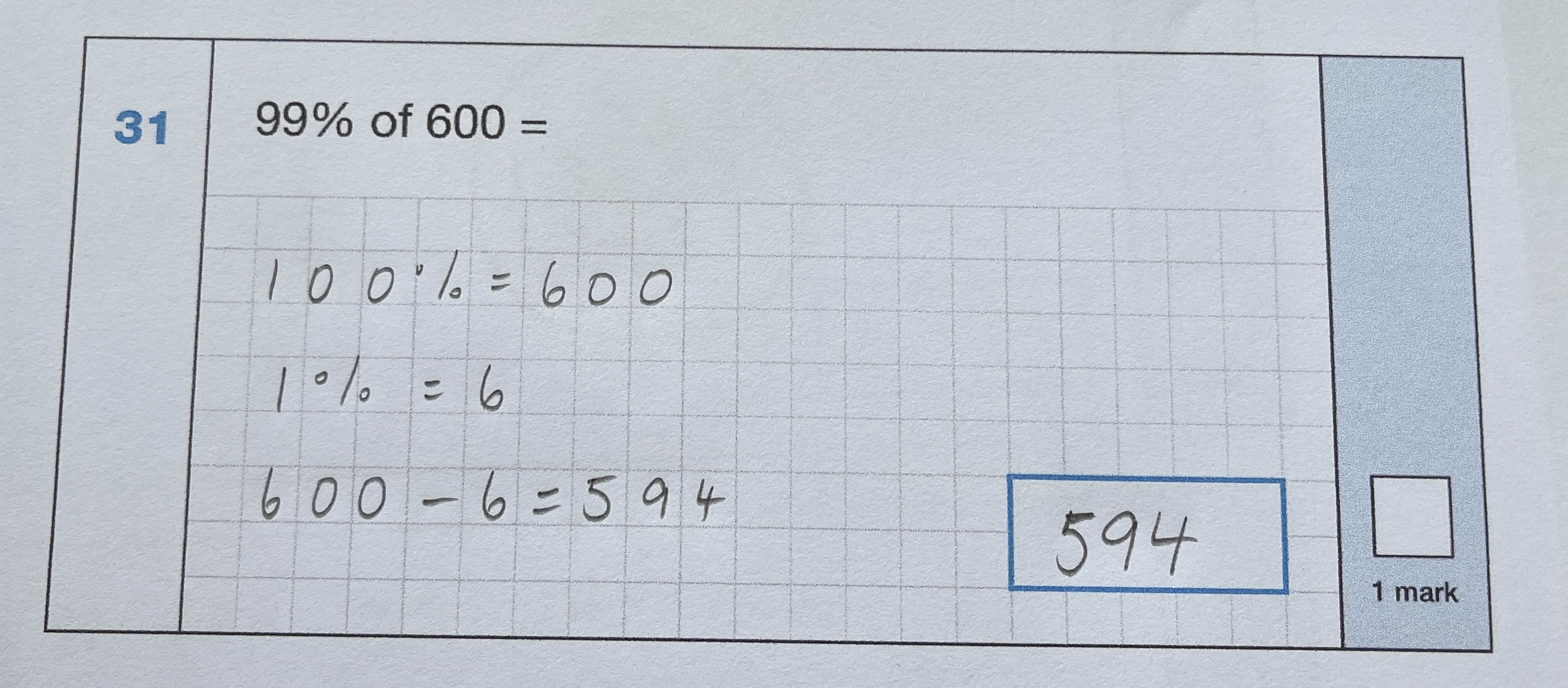
The ‘known facts’ column is a valuable one to draw pupil attention to.
In each paper between 2017 and 2024, there have been 7 or 8 questions that draw directly on pupil knowledge of multiplication facts to 12x12. That’s between 17.5% and 20% of the total marks for the paper!
Revision tip: Look for ‘base facts’
Examples from 2024 include:
- 23 x 6 (using 2 x 6 x 10 and 3 x 6)
- 6,600 ÷ 6 (using 66 ÷ 6 x 100)
- 640 ÷ 8 (using 64 ÷ 8 x 10)
- ? = 630 ÷ 7 (using 63 ÷ 7 x 10)
Revision tip: Keep rehearsing times tables
Arguably, 80% of the 2024 arithmetic paper involved using multiplication and division facts so they are well worth practising!
For teaching and rehearsal strategies:
- Making times tables stick: how to use a practice scaffold for learning multiplication facts (includes a free, downloadable practice mat)
- The Concrete, Pictorial Abstract (CPA) approach for teaching and mastering times tables
………………………………………………………………………………………..
Choosing what to revise in the weeks running up to the arithmetic test
- Use QLA: Utilise Question Level Analysis (QLA) of practice papers to identify areas where pupils need improvement. Focus on topics that have historically been challenging.
- Ask Pupils: Involve pupils in the revision process by asking them which areas they feel less confident about. Tailor your revision sessions to address these concerns. The Key Stage 2 Arithmetic Paper Question Summary could provide a stimulus for this discussion.
- Choose high-value topics and skills:
- Calculations (Four Operations): Mastery of addition, subtraction, multiplication, and division is crucial. These operations form the foundation of many arithmetic questions and are frequently tested
- Fractions, Decimals, and Percentages (FDP): Understanding how to convert between fractions, decimals, and percentages, as well as performing calculations involving these, is essential. This area often carries a significant weight in the arithmetic paper. For tips on how to develop understanding, take a look at this blog: Simplifying fractions, decimals and percentages using a beadstring
- Number and Place Value: A strong grasp of place value, including reading, writing, ordering, and comparing numbers, is fundamental. This skill supports many other areas of arithmetic and helps in solving more complex problems.
Focusing on these areas will provide a solid foundation for tackling the arithmetic paper effectively.
For ideas and strategies to revise to boost confidence in the reasoning papers:
